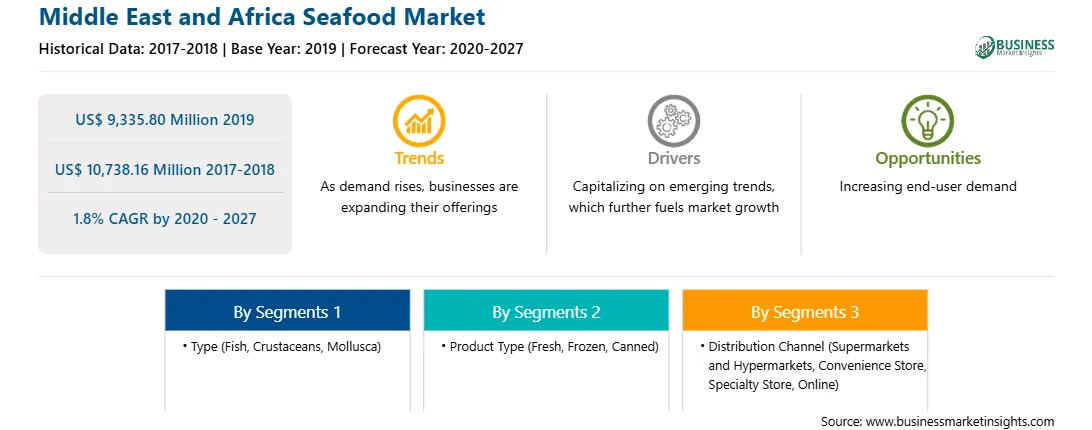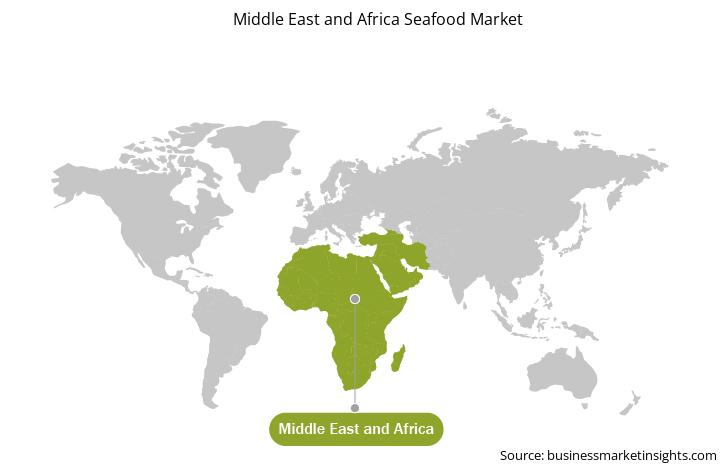Pages: 111
As per the Food and Drug Administration (FDA), seafood encompasses all commercially obtained saltwater and freshwater fish, molluscan shellfish, and crustaceans. The demand for seafood is anticipated to witness a dramatic growth across the globe owing to its health benefits. According to the Food and Agriculture Organization (FAO) it is predicted that by 2030, an excess value of 40 million additional tons of seafood, which is an increment of almost 30% will be required to meet the rising demand. Rising per capita consumption accompanied by the affluent nations demand for imported seafood products is considered to strengthen the market further. The demand for seafood products across specialty restaurants is growing at a robust pace in recent times. A large population of consumers prefers to eat seafood over other cuisines, and this is major factor that propels the market expansion. Moreover, coastal regions are implementing concerted efforts to develop advanced supply chains for the export and supply of seafood. Also, the growth of the seafood market highly depends on the ease of procuring seafood from coastal regions. Furthermore, the improvement in economic condition and progression in disposable income levels also helped the market growth. The countries in the region are witnessing strong urbanization trend and it resulted in the increase in disposable income among the middle-income groups, subsequently adding to the middle-class population. The medium as well as high-income consumers in urban areas are changing their consumption trend from essential to premium food products. This trend favors seafood companies and suppliers to improve their product and service line in the seafood segment.
The Middle East and Africa Seafood market is expected to reach US$ 10,738.16 Million in 2027 from US$ 9,335.80 Million in 2019. The market is anticipated to grow with a CAGR of 1.8% from 2020-2027. Health benefits associated with seafood attracts health conscious consumers and this aids in the growth of the market.
By type, the fish segment accounted for the largest market share in the Middle East and Africa seafood market in 2019. In terms of product type, the fresh segment held the largest market share of the seafood market in 2019. In terms of distribution channel, the supermarket and hypermarket segment held the largest market share of the seafood market in 2019.
Some of the major primary and secondary sources for seafood market included in the report are, Kangamiut Seafood A/S, Mowi ASA, The Union Group PCL, and Grupo Nueva Pescanova.
Strategic insights for the Middle East and Africa Seafood provides data-driven analysis of the industry landscape, including current trends, key players, and regional nuances. These insights offer actionable recommendations, enabling readers to differentiate themselves from competitors by identifying untapped segments or developing unique value propositions. Leveraging data analytics, these insights help industry players anticipate the market shifts, whether investors, manufacturers, or other stakeholders. A future-oriented perspective is essential, helping stakeholders anticipate market shifts and position themselves for long-term success in this dynamic region. Ultimately, effective strategic insights empower readers to make informed decisions that drive profitability and achieve their business objectives within the market.

| Report Attribute | Details |
|---|---|
| Market size in 2019 | US$ 9,335.80 Million |
| Market Size by 2027 | US$ 10,738.16 Million |
| Global CAGR (2020 - 2027) | 1.8% |
| Historical Data | 2017-2018 |
| Forecast period | 2020-2027 |
| Segments Covered |
By Type
|
| Regions and Countries Covered | Middle East and Africa
|
| Market leaders and key company profiles |
The geographic scope of the Middle East and Africa Seafood refers to the specific areas in which a business operates and competes. Understanding local distinctions, such as diverse consumer preferences (e.g., demand for specific plug types or battery backup durations), varying economic conditions, and regulatory environments, is crucial for tailoring strategies to specific markets. Businesses can expand their reach by identifying underserved areas or adapting their offerings to meet local demands. A clear market focus allows for more effective resource allocation, targeted marketing campaigns, and better positioning against local competitors, ultimately driving growth in those targeted areas.

MEA Seafood Market–List of 4 Companies
The Middle East and Africa Seafood Market is valued at US$ 9,335.80 Million in 2019, it is projected to reach US$ 10,738.16 Million by 2027.
As per our report Middle East and Africa Seafood Market, the market size is valued at US$ 9,335.80 Million in 2019, projecting it to reach US$ 10,738.16 Million by 2027. This translates to a CAGR of approximately 1.8% during the forecast period.
The Middle East and Africa Seafood Market report typically cover these key segments-
The historic period, base year, and forecast period can vary slightly depending on the specific market research report. However, for the Middle East and Africa Seafood Market report:
The Middle East and Africa Seafood Market is populated by several key players, each contributing to its growth and innovation. Some of the major players include:
The Middle East and Africa Seafood Market report is valuable for diverse stakeholders, including:
Essentially, anyone involved in or considering involvement in the Middle East and Africa Seafood Market value chain can benefit from the information contained in a comprehensive market report.